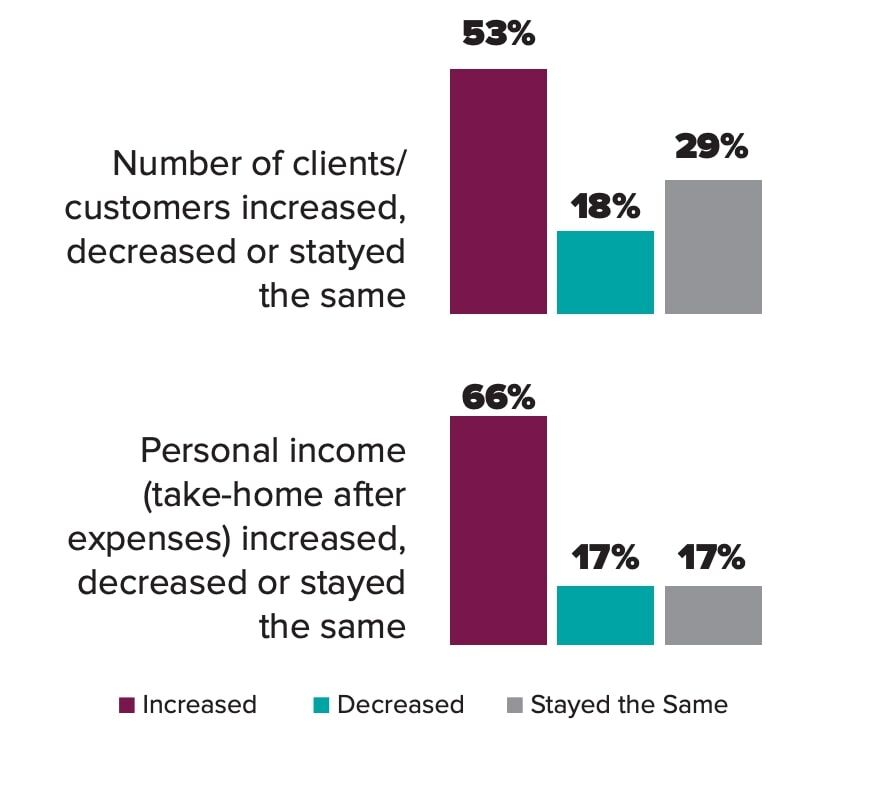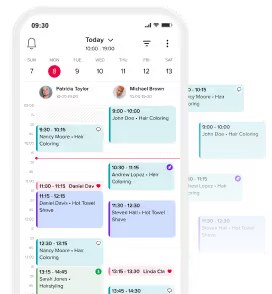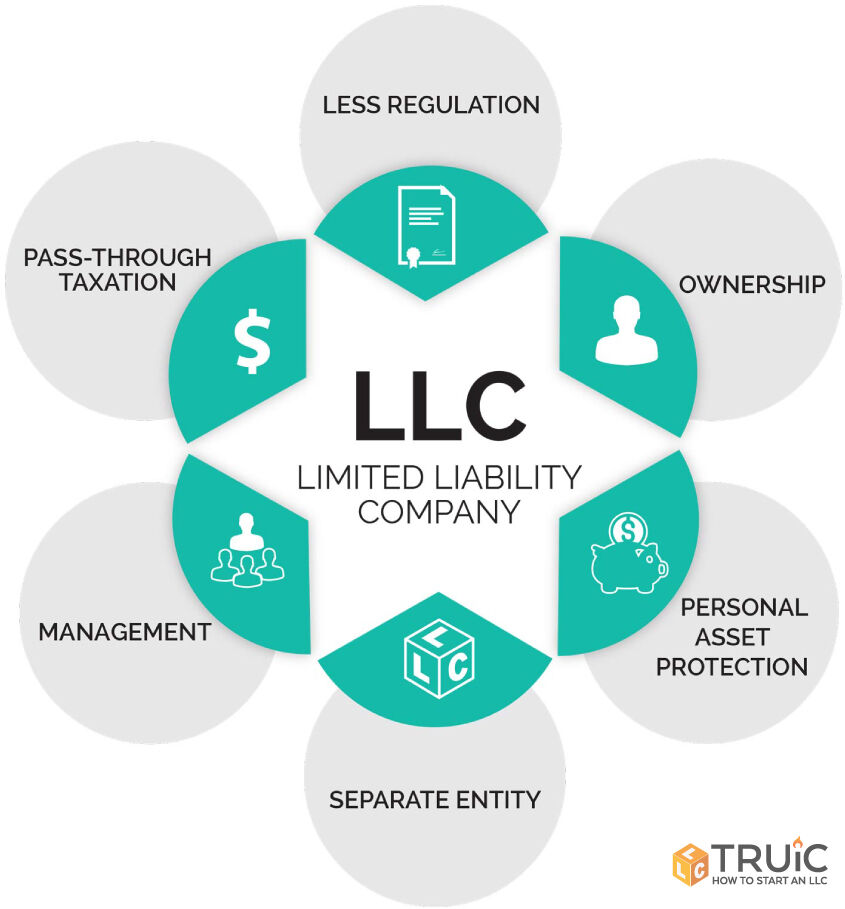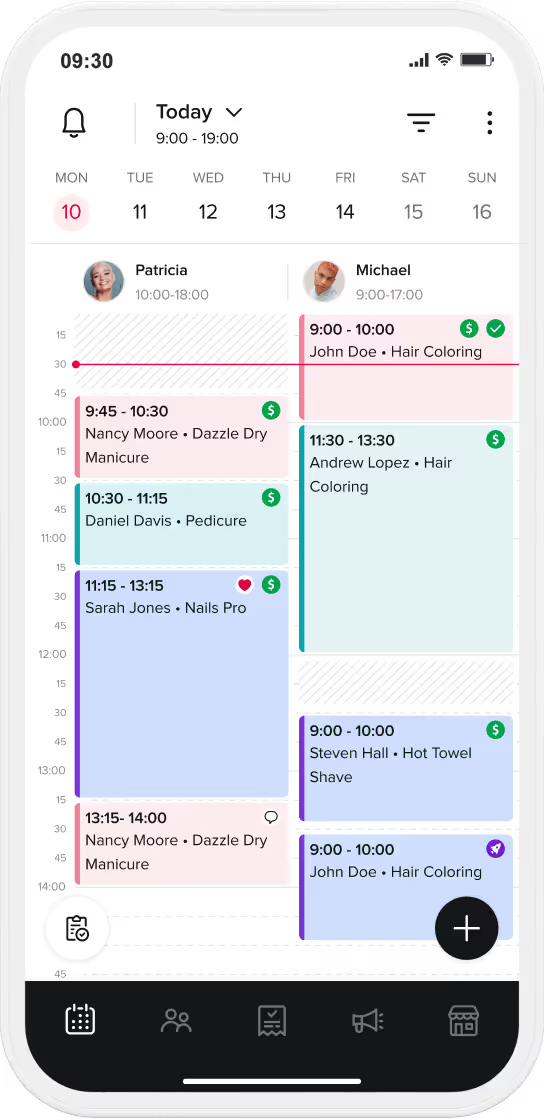

If you’ve landed on this post, chances are you’re considering being self-employed in your hair and beauty career.
Maybe you’re tired of being an employee and want to set up your own salon or have a suite to yourself.
Perhaps you want more freedom with the types of clients you serve. Or maybe you’re not a fan of having to split your earnings with another party.
The good news is that being a solopreneur has its benefits. For starters, in a survey conducted by Modern Salon, 53 percent of respondents said their number of clients increased when they went independent.

Whatever the case, becoming a solo entrepreneur is a major step and one that you shouldn’t take lightly.
Being a solo business owner can be extremely rewarding, but it also comes with additional costs and responsibilities.
That’s why before you take the leap, it’s worth understanding how to launch a business.
Which is exactly what this post will talk about.
During the latest ISSE event, we virtually sat in on a number of discussions and classes on how to be self-employed in the hair and beauty industry. Tons of insights were shared and we compiled some of the best advice in this post.
Ready to become a solo entrepreneur but not sure how to launch a business? Here are the steps you need to take to get your biz off the ground.
Business planning isn’t sexy, but it’s a vital first step when you’re looking to go solo in your hair or beauty career.
As Monte Zwang, the owner of Wellness Capital Management, puts it… “Nothing happens without a plan.”

That’s why he strongly recommends coming up with a spa, barbershop, or salon business plan and setting targets to aim for when starting and growing your business.
Jalia Pettis, a licensed beauty professional and educator, offers similar advice. “You 100% need a business plan,” she says. “It doesn’t need to be a 20-page document. It’s really just enough for you to get the nuts and bolts in there so that you are setting goals for yourself, setting goals for your business, and making it make sense in black and white”
So, what should your business plan have? According to experts, most biz plans should contain:
Business overview. Your plan should provide an overview of what your business is all about. You could also outline the vision, mission, and vibe of your business. At this stage, Monte recommends completing the following sentences:
Completing these statements can help you gain clarity into the vision, mission, and vibe of your business.
Market research. Next, your business plan must contain data about your market. Who’s your target audience? Where will your business be located? What are the demographic and psychographic profiles of your market? What about your competitors? These are some of the questions that your business plan should answer.
Marketing plan. Your business plan should also outline the ways in which you intend to market your business. List out the channels, strategies, and tactics you will use to get in front of your target audience, and use a marketing budget planner to get a sense of costs attached to all.
Sales and revenue plan. Discuss how your business will make money. What services will you offer and how much will they cost? Will you have other revenue streams (e.g., retail sales, booth rentals, etc.?)
Funding. Outline how you will finance the business. Are you taking out a loan? Will you be bootstrapping your venture? These are some of the things you should be thinking about at this stage.
Timeline. Layout the timeline for your business. Indicate the dates or time periods for when you’ll launch your business and when you plan to hit certain milestones. The key here, says Jalia, is to be honest and set attainable timelines.
“Having an attainable timeline really allows you to project how long it’s going to take you before you actually launch and manage your business,” she says
Projections. Your business plan should also contain financial projections. How much do you plan to make after a given period? How many customers will you have? Laying out these details will guide your efforts and determine whether or not you’re on track.
Just note that not all projections are created equal.
As Monte points out, “Reasonable projections aren’t fabricated from what you’ve seen in a dream or a crystal ball. Projections should be based on reality, not fantasy.”
He continues, “You want projections that are conservative but not pessimistic. To be safe, sales should be projected on the low end and costs on the high end. Meaningful projections need to be based on something tangible, and not a pie in the sky wishful thinking.”
Monte offers examples of good projections versus bad ones. Consider the following.
Once you have a plan in place, it’s time to make things official.
Setting up a business correctly does require you to jump through a number of government hoops. It can feel tedious (especially if what you REALLY want to do is work on people’s hair and skin), but taking these steps is a must. Establishing a business properly from the get-go can save you money and stress in the future.
Bear in mind that the following pointers should be taken as general advice. Laws, regulations, and procedures will vary depending on your location and the nature of your business, so always consult with a tax or financial professional who knows the lay of the land.
With that being said, here are some of the steps you should take when starting and launching your business.
One of the first you need to do is to set up a business entity. Are you going to be a sole proprietor, an LLC, or a corporation?
Former beauty school grad turned CPA Michelle Michelle Cook, who founded Profit That Counts, says that for many beauty and wellness professionals, a good entity to start with is an LLC.
This is because LLCs give you some legal protection that sole proprietorships cannot.
“The problem with [a sole proprietorship] is it leaves you open to legal liability. Let’s say for example that someone were to sue you. If you don’t have a legal entity in place then they have access to your house, your car, and your bank account to be able to satisfy the lawsuit.”
“That’s why having a legal entity set up is so important. It gives you that legal protection right away.”
She also loves LLCs because they’re flexible when it comes to taxes. As an LLC, you can choose to be taxed the same way as a sole proprietor or you can elect to be taxed as a corporation once you start to grow.

Using the services of a registered agent can simplify the process of forming an LLC.
Once you have your business structure established, the next step is to obtain an Employment Identification Number (EIN). Think of this as the social security number of your business.
“Even if you’re not going to have employees, you still need one,” says Michelle.
It’s best to do this early on, as the other steps in the business setup process will require an EIN.
The good news is that getting an EIN in the United States is quick and simple. You can even do it online on the IRS website.
“It takes 5 minutes to fill out the application… it’s a super easy form to fill out. All you have to do is tell it who you are, the name of your business, and what type of entity you are,” explains Michelle.
The next step is to open a business bank account.
Michelle stresses the importance of having a business bank account that’s separate from your personal account.
Why? For one thing, when you do your business taxes, you’ll need to identify your business transactions to be able to claim your expenses and provide accurate income information. If your business and personal finances are mixed up, tax season will be much more difficult.

Once you have a business account, see to it that all your salon, spa, or barbershop expenses run through that account. In the same vein, you shouldn’t run any personal expenses through your business bank account. This is because when you have a legal entity structure (i.e., an LLC), you will lose the legal protection it provides if you combine your business and personal financials.
If you’re going to be selling retail products either through a retail display or through an online store, you also need to register for a sales tax ID. Note that in certain states, services may also be taxed.
According to Michelle, you need to “do research about what your state, county, or city is requiring of you.”
Her tip? Head to your state’s website to figure out what you should do on the sales tax side, including how much tax to collect and when you need to file.
The next step is to set up your payment processor. While it’s tempting to use apps like Venmo because they’re easy to use on the front end, Venmo actually makes things extremely messy from a bookkeeping perspective, says Michelle.
She advises choosing a credit card processor specifically for handling business transactions.
“Once again you need an EIN number to get this set up, and you need a bank account so that you can deposit the funds.”
Michelle also recommends using a credit card processor that integrates with your appointment management software.
According to her, this will allow you to take deposits or at least take credit card information at the time of booking, so you can enforce your appointment cancellation policy and charge for no-shows.
Next up is to register for a business license in your local area. “Most cities or counties want you to get a business license in addition to your cosmetology license,” says Michelle.
“This is a completely different license — you could even call it a permit, and you’ve got to register with your city or county.”
The process for obtaining a business license depends on your local area. Some cities or counties have an online portal but others may require you to handle the paperwork in person or via snail mail.

So, you’ve jumped through all the hoops and finally made your business official… great! Now, let’s talk about getting your first few clients.
In an encore ISSE panel, Salon Republic CEO Eric Taylor spoke with a number of solo stylists and asked them to share some of their top marketing tips for those who are starting out. Here are some of the things they had to say.
A helpful tip for getting people to find your business is to establish a presence on online business directories.
“I set up a Google My Business page and a Yelp business page,” says stylist Edith Navarro.
She claimed both listings and asked clients to leave her a review. Doing so helped tremendously in getting her name out there.
“What I like about claiming the business on Yelp and on Google is the minute somebody searches my name or my salon name, it comes up immediately. They don’t have to scroll to find me; it comes up and they’re able to see reviews.”
According to Edith, her listings have gotten over 10,000 views on Google in a given month. And the best part is she isn’t actively paying for that exposure.
That’s why if you haven’t done so yet, claim your listings right away and start collecting reviews.
Dasi B., aka Extension Sorceress, says that when she began her career as a solo stylist, she attracted clients by doing hair for free.
“What I used to do — and had the best results with — is I would go around to local businesses that had the type of clientele that I wanted. So maybe it’s a nice restaurant in the same block or a really nice clothing store. Then I would do free hair. I’d go in there, and whoever is the host or the person working retail… I would do their hair and they would be so visible to all these other people that I want as clients.”
Hairstylist and educator Philip Wolf offers similar advice and says that he would find local businesses, then approach people who “were seen a lot” such as concierge staff, bottle service staff, etc.
He would do their hair for free and would keep giving them free services as long as they sent people his way.
Apps like Instagram can be incredibly useful marketing tools, and there’s no shortage of tips for using social media to find clients.
In addition to optimizing your Instagram content and grid, consider leveraging hashtags to increase your exposure. This is the tactic that stylist Neal Malek used when he first started out.
“I started small and I looked at my city, [then] I created hashtags like #orlandohair, #orlandohairstylist, #orlandohaircolorist… I would just knock the daylights out of it.
Eventually, that brought me so much business that I was able to grow outside of that and I was able to expand to Florida.”
See if you can do something similar with your social media content. Publish high-quality and relevant posts, then tag accordingly.
Going down the path of solo entrepreneurship isn’t easy, but it can also be one of the most rewarding things you could do for yourself and your career. To maximize your success, kick things off on the right foot by having a plan, making your business official, and being strategic with your marketing.
Master your plans and set your business for success from day #1 with Booksy
An LLC provides a layer of legal protection that a sole proprietorship does not. Without a legal entity, personal assets like your home or car could be at risk if you are sued. Additionally, LLCs offer tax flexibility as your business grows.
Yes. An EIN (Employer Identification Number) is necessary to open a business bank account, set up a professional payment processor, and register for various licenses. It is quick and free to obtain on the IRS website.
While convenient, personal apps can make bookkeeping messy and complicated. Experts recommend a dedicated business credit card processor that integrates with your appointment software, allowing you to take deposits and enforce cancellation policies.
Projections should be conservative but not pessimistic. It is safest to project sales on the low end and costs on the high end. This ensures you are prepared for reality rather than a "pie in the sky" wishful thinking scenario.
Instead of just posting generic content, use local hashtags (e.g., #OrlandoHair) to reach people specifically searching for services in your city. This strategy helps you "knock the daylights out of" local exposure before expanding your reach.
Separating accounts is vital for tax accuracy and to maintain the legal protection provided by an LLC. Running personal expenses through a business account can cause you to lose your liability protection.

